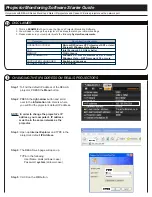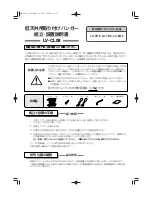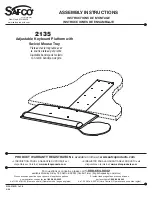
Only apply voltage/switch on the power supply (U
v
> 0 V) once all electrical connec‐
tions have been established. The green LED indicator on the top of the sensor
lights up.
Explanations of the connection diagram (Graphic B):
Switching outputs Q and /Q (according to Graphic B):
Switching output Q (according to Graphic B):
HSE18L-P (PNP: load -> M)
HSE18L-N (NPN: load -> L+)
L = light switching
D = dark switching
Alarm / Health = diagnostics output (see Additional functions)
TI / Test = test input (see Additional functions)
4 Red light: Align the sender with the receiver. Select the position so that the red
emitted light beam hits the receiver. Tip: The signal strength light bar on the rear of
the sensor will help to ensure correct alignment. Use white paper or a reflector as
an alignment aid. The sender must have a clear view of the receiver, with no object
in the path of the beam [see Graphic E]. You must ensure that the optical openings
(front screen) of the sensors are completely clear.
Optimized alignment can be achieved and verified by using the signal strength light
bar located on the back cover of the sensor. The LEDs on the light bar will illumina‐
te corresponding to the strength of signal received by the sensor. When no or only
red LEDs are illuminated, the sensor is receiving no or too little signal to switch the
output. The first yellow LED will illuminate at the minimum switching threshold and
the green LEDs will continue to illuminate as the received signal increases [see
Graphic E].
0 %
100 %
0 %
100 %
0 %
100 %
0 %
100 %
Image: E
5 Sensor which it is not possible to set: The sensor is set to factory settings and rea‐
dy for operation.
Refer to graphics C and G to check the function. If the switching output fails to be‐
have in accordance with graphic C, check application conditions. See section Fault
diagnosis.
COMMISSIONING
3
8017857.YMH6 | SICK
Subject to change without notice
3
Technical data and connection diagrams (figure B) starting on page 69.
0 %





































